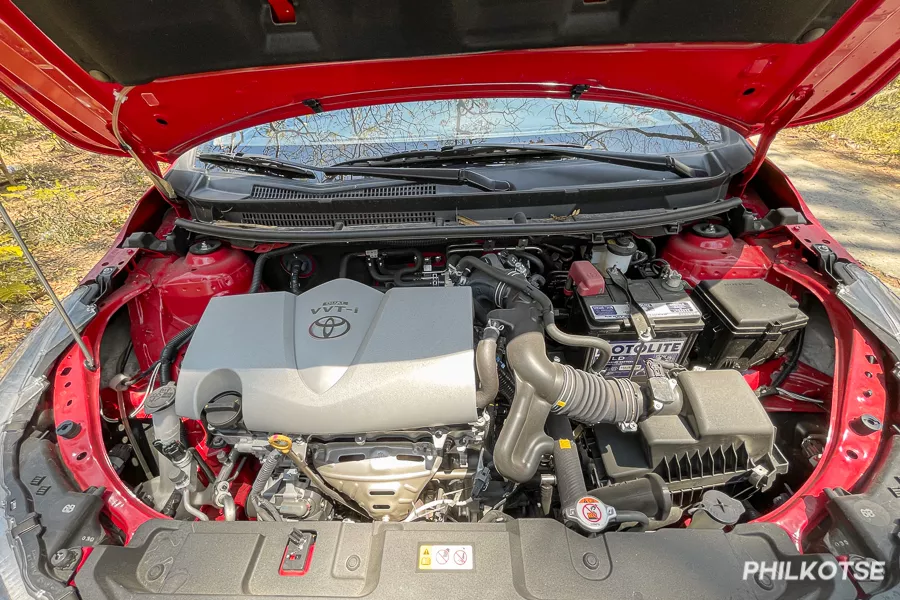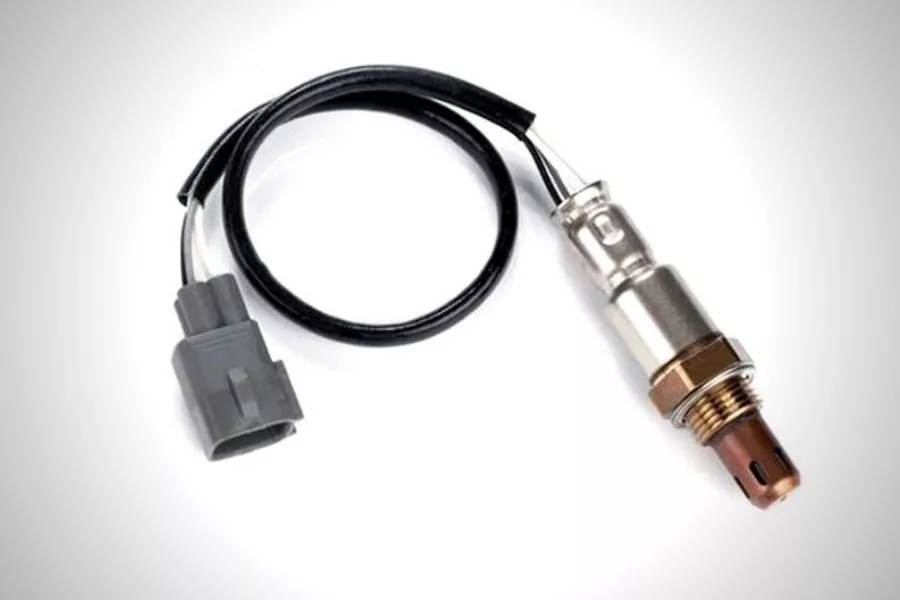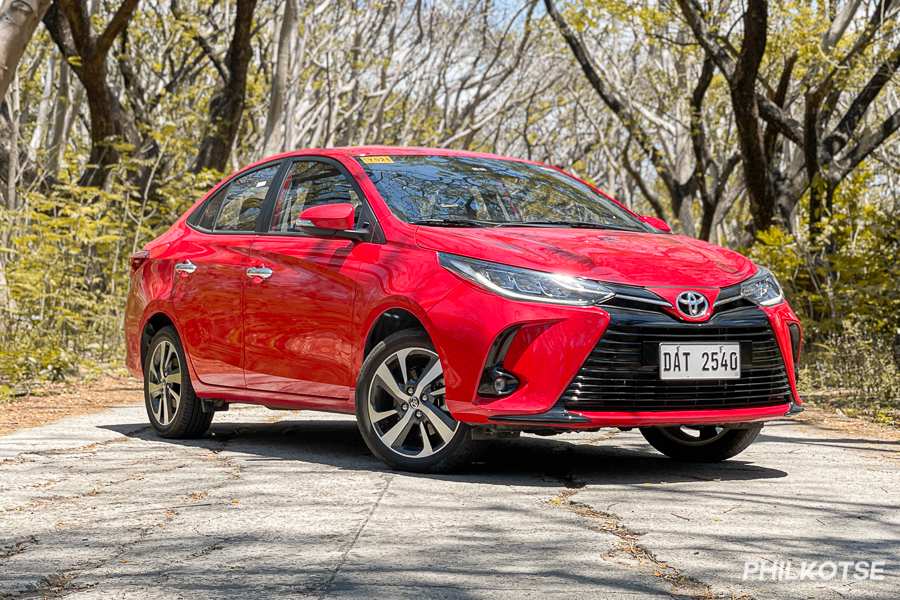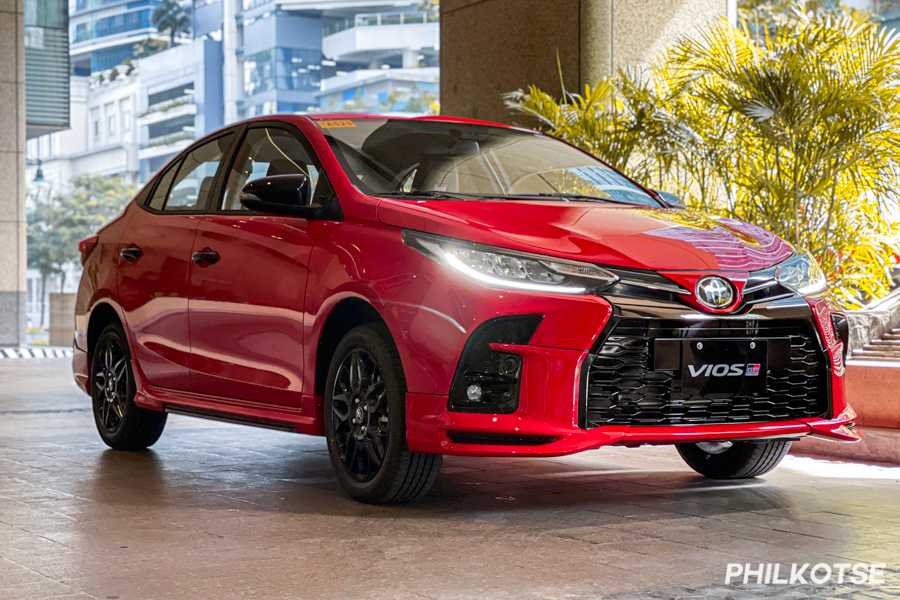The Toyota Vios is without a doubt one of the popular cars in the market today. Including the recently facelifted model Toyota Vios, the car in general has been known to be a reliable car with only a few mechanical issues. Then again, some older units will experience one or two problems as they age. So, what are the common Toyota Vios problems, and how does one fix them?

The 2021 Toyota Vios G 1.5-liter CVT
Before talking about these issues and their fixes though, do note that the current available Vios is still the XP150 third-generation. As such, it uses the same chassis and engines, and so these fixes will apply to Vios models released from 2013 to the present.
Toyota Vios: Fuel Consumption issues
As tested during our Vios review, the 1.5-liter inline-4 that propels this Toyota-made sedan can return up to 12.2 km/L in mixed (city and highway) driving conditions. According to Toyota itself, the 1.3-liter mill can return a higher consumption rate of 19 km/L in mixed conditions.
If, however, your Vios returns a figure larger than those in the regular, then you might be experiencing mechanical problems. That is, if you ignore the fact that you might be a “lead foot driver.” In which case, you might want to change your driving habits.

The current 1.5-liter Vios variants still uses the 2NR-FE inline-4 mill
On the mechanical side though, these problems might involve dirty oil, worn-out oxygen sensors, dirty spark plugs, as well as dirty air filters. These of course can be easily replaced, but we urge you to employ the help of a mechanic if you don’t know what you’re doing. This is especially true if the fuel consumption issue can only be solved by replacing the oxygen sensor as you’ll need to be familiar with its position in the engine.
Toyota Vios: Overheating Problems
While the Vios’ stock radiator is known to be “bulletproof,” there are some instances that it will have trouble keeping your car cool.
For older units, the radiator might need a flush as its pipes might be clogged with slush and/or debris. For this, you’ll want to drain the old coolant fluid and clean it out with a commercial radiator flush. After draining, fill it up with the flush, and start your engine. Let it run for 10 to 15 minutes to allow the radiator flush to circulate.
By doing this, the radiator flush, which is a solvent of sorts, can get rid of sludge, loose debris, and other crap blocking your coolant pipes and radiator chambers. Do note though that the steps on these might vary depending on the type of radiator flush product you’re using. As such, don’t forget to read its label.

STP branded radiator flush liquid
Another cause of overheating is of course not filling up your car with enough coolant. To fix this, simply top it up. And of course, the cover of a radiator needs to be pressure tight. If that thing is loose, coolant might not be able to circulate properly.
Other things that can cause your Vios to overheat include running on low oil levels, which is fixed by topping it up. Also, consider checking the condition of your Vios’ thermostat because that might be causing overheating as well.
Then again, there are also more difficult to fix causes like a busted radiator fan or radiator leaks caused by holes on the radiator itself. For these issues, we recommend going to a radiator specialist.
Toyota Vios Acceleration Problems
As a modern car, the Vios uses an electronic control unit to handle the many variables required to manage the operation of its engine. The accelerator pedal itself employs potentiometers, which provide input to the ECU in order to control how much fuel goes into the engine. If any of these go bad, they will surely cause your Toyota Vios to have acceleration problems.

An oxygen sensor for the Vios 1.5-liter versions
Do note though that to fix ECU-related issues, you’ll need to get help from the CASA or a tuning shop. Other causes of slow acceleration for the Vios include oxygen and VVT sensor issues. For these, we recommend going to a mechanic as well. As a side note, sensor issues can usually trigger the check engine light.
Other causes of slow acceleration might be a defective fuel pump, which will need to be replaced. Also, a clogged and dirty air filter might cause acceleration problems as the engine needs a certain amount of oxygen to effectively burn fuel. This of course is also remedied with an outright replacement.
Toyota Vios: Clutch Problems
If you’re driving a manual Toyota Vios with a clutch that’s too soft, then you might want to replace the clutch immediately. This is because a soft and spongy feeling clutch pedal is one sure sign that the clutch disc is nearing its expiry. Of note, this is common on heavily used, older units.
If the engine of your Vios is revving high but moving slowly, this means that the clutch might be slipping. And yes, this is another sign that the clutch might need to be replaced.
Other ways that clutch issues manifest is a burning smell. This is caused by friction, which in turn is caused by bad driving habits like clutch riding. To be specific, clutch riding causes the clutch disc to engage and thus it is in constant contact with other clutch components. Constant friction causes heat to build up, not to mention the accelerated wear and tear of the clutch. To this end, avoid riding the clutch to ensure its longevity.

Vios or not, clutch discs aren't cheap
On continuously variable transmission Vios variants, common issues include acceleration delays, jerking, and other strange noises. One way to fix this is to change the CVT fluid.
Those are the common issues that can be encountered with the Toyota Vios and how to fix them. Of course, there are other issues that one might encounter during your car’s lifetime, and they might not be covered here. As such, we also recommend visiting the many Toyota Vios forums as one or two posts just might have the solution to your specific issue.
For more car maintenance guides, keep it here on Philkotse.com.
Know more about Toyota Vios 2026

Competing in the subcompact sedan segment, the Toyota Vios 2025 is the top sales contributor for the Japanese automaker. The price for the Toyota Vios in the Philippines ranges from PHP 738,000 to PHP 1,039,000. A total of 7 Toyota Vios variants are offered, with the top-of-the-line Vios G CVT variant coming with a tag of PHP 1,039,000. Two engine options are available in the range, which can be connected to either a 5-speed manual or continuously variable transmission (CVT). Dimensions-wise, the subcompact sedan spans 4,425 mm in length, 1,730 mm in width, and 1,475 mm in height. The main rivals of the Toyota vehicle include the Honda City, Mitsubishi Mirage G4, and Nissan Almera.
The Toyota Vios is not only the best-selling model in the Japanese automaker's lineup, but the entire Philippine market. It serves as a reliable subcompact sedan for those who are looking for a daily driver. Also, the Vios is proudly Philippine-assembled which supports Filipino automotive workers. Now, the vehicle is competing in its respective class head high using the refreshed body released by Toyota Motor Philippines (TMP) in the country in 2020.
>>> New and used Toyota Vios 2025 for sale in the Philippines
Toyota Vios Launch
In 2002, Toyota introduced the first-generation Vios in the Philippines. A few years later in 2007, the second-generation sedan was launched. This version gained the "Batman" nickname due to the shape of its grille.
Several years onwards In 2013, Toyota brought in the third-gen Toyota Vios. It has grown in size, and it also came with a larger engine. The Toyota-made sedan was given a major update in 2018. It bore a new exterior design, and it also gained the upmarket Prime variants as well.
More recently in 2020, Toyota Motor Philippines launched another refresh of the Toyota Vios model. It's fitted with sportier fascia, a new grille, a new pair of headlamps, a revised foglamp housing, and a new lower grille, among others.
In March of 2021, TMP then introduced the Toyota Vios GR-S.
Toyota Vios Exterior
Up front, the Toyota Vios for the Philippines comes with a front end that mirrors the current designs of high-end models like the Corolla Altis and the Camry. The said design features a wide-slatted grille, flanked by the angular fog lamp housing. For the high-trim GR-S and G, the headlamps are three-tier LEDs with integrated LED daytime running lamps. The rest of the variants get a pair of four-bulb halogen headlights.
For the side and the rear, not much has changed since the previous version. The GR-S stands out from the rest of the variants with its black-colored exterior pieces, rear spoiler, and rear lower bumper with an integrated diffuser.

The Toyota Vios G
Apart from those, the Toyota Vios GR-S for the Philippine market also has different-looking side skirts and a set of GR-S 16-inch alloy wheels. The G variant on the other hand still has a piano black grille, but it gets chrome-plated door handles instead of the black-colored ones found on the GR-S.

The all-new 2021 Toyota Vios GR-S
>>> Related: 2021 Toyota Vios GR-S review by Philkotse
Toyota Vios Interior
The Toyota Vios for the Philippine market can offer seating for up to five occupants including the driver. For the top-spec GR-S and G variants, they both come equipped with automatic air-conditioning. For the most part, the Toyota Vios' dashboard are made out of sturdy plastic, combined with silver-colored accents.
Soft touch points for the Vios are also abundant. The Toyota-made sedan's door cards are made out of a combination of plastic, and a soft, fabric-covered material. There's also the presence of a center elbow-rest.

The Interior Of The Toyota Vios G
As for the seats, most variants except the GR-S come with fabric seats. The GR-S instead has synthetic leather with red contrast stitching, combined with suede pieces.

The rear seats of the Toyota Vios
To keep occupants comfortable, both the GR-S and G Vios variants are equipped with automatic air-conditioning systems. The rest of the trim levels on the other hand come with a manual air-conditioning system.

Inside the Toyota Vios GR-S
>>> Related: Toyota Vios for sale at good prices on Philkotse.com
Features & Technology
For entertainment, the Toyota Vios GR-S, and the Vios G variants for the Philippine market come standard with a 6.75-inch touchscreen headunit. The said headunit is also capable of connecting via Bluetooth, USB, and Aux jack.

The Vios G's touchscreen headunit
The mid-tier XLE and XE trims also have the aforementioned headunit, but these come with a four-piece speaker set instead. The Vios J on the other hand comes standard with a 2-DIN audio unit linked to two speakers.
Besides the aforementioned touchscreen, the GR-S is also equipped with the Gazoo Racing 4.2-inch TFT multi-information display. Other variants do get an Optitron gauge cluster, as well as a multi-information display. The GR-S and the G also come with a push-to-start button, a leather-clad shift lever, and a drive-mode selector. All Vios variants also come standard with a tilt-adjustable steering wheel column.

The tech and convenience features will vary depending on the variant of the Toyota Vios
For safety, the GR-S and G variants are equipped with dual-front airbags, side airbags, curtain shield airbags, and driver's knee airbags. The rest of the trim levels have dual-front airbags, and the airbag for the driver's knee.
Anti-lock braking with electronic brake-force distribution, stability control, traction control, and hill-start assist are available on all Vios trims. Only the GR-S and G come with a rear-view camera, and only the former has a clearance sonar.
>>> See more: New and used Toyota Vios for sale in the Philippines at the best price
Platform & Chassis
The refreshed Toyota Vios for the Philippine market still uses the same platform as the previous model. As before, higher trim levels have disc brakes all around.
For suspensions, the Vios uses a MacPherson Strut type for the front and a torsion beam-type suspension for the rear. Moreover, the engine is still positioned transversely, with the power sent to the front wheels.
Engine & Drivetrain
The Toyota Vios for the Philippine market has two engine options. The larger one is a 1.5-liter inline-4 engine capable of making up to 106 hp and 140 Nm of torque. This said engine is available on the GR-S and the G Trim. For the former, it is paired to a continuously variable transmission (CVT) only. The Vios G can either come with a CVT or a five-speed manual transmission.

The Toyota Vios G's 1.5-liter mill
The other engine option for the Vios is a 1.3-liter inline-4 engine. At most, this mill can produce up to 98 hp, and 123 Nm of torque. For the XLE, the said engine can be paired with a CVT or a five-speed transmission. The 1.3 XE's sole transmission is a CVT, while the J comes standard with a five-speed manual transmission only.

The gear shift lever of the Vios GR-S
>>> Also check out:
- Toyota Vios 2020 Philippines Review: Join the club
- 2021 MG 5 vs Toyota Vios Comparison: Spec Sheet Battle
Toyota Vios 2025 Price List
| Variants | Price |
|---|---|
| Toyota Vios 1.3 J MT | ₱738,000 |
| Toyota Vios 1.3 XE CVT | ₱780,000 |
| Toyota Vios 1.3 XLE MT | ₱868,000 |
| Toyota Vios 1.3 XLE CVT | ₱908,000 |
| Toyota Vios 1.5 G MT | ₱979,000 |
| Toyota Vios 1.5 G MT (White Pearl) | ₱994,000 |
| Toyota Vios 1.5 G CVT | ₱1,039,000 |
₱ 732,000 - ₱ 1,055,000
ExploreRecent posts
- Toyota Vios G full review philippines Jun 15, 2022
- Latest Toyota Vios Price Philippines 2026 Sep 23, 2025
- Toyota Philippines price List 2026 May 10, 2023
















